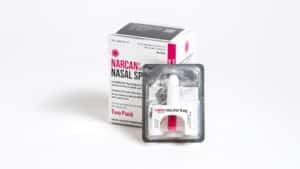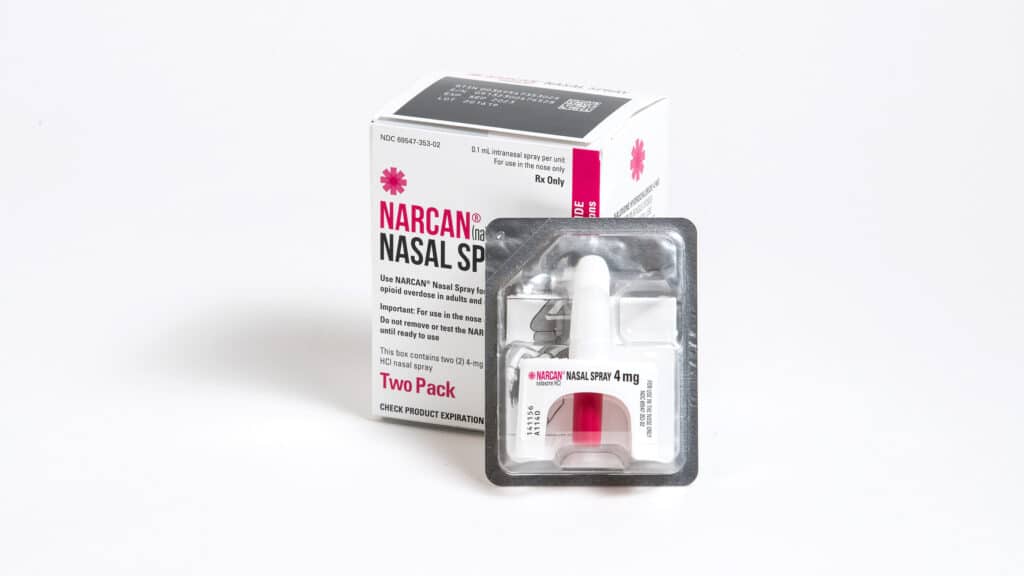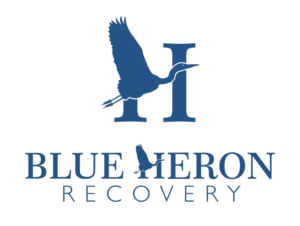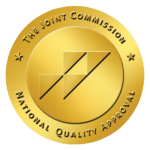
Understanding Narcan: Its Role in San Antonio Drug Rehab Centers
Narcan, scientifically known as Naloxone, has emerged as a beacon of hope in the urgent battle against opioid overdose. In San Antonio, a city that has felt the profound impact of the opioid crisis, Narcan is not just a medical tool but a critical lifeline that has reshaped approaches to addiction treatment and emergency interventions. As opioid-related emergencies continue to challenge communities, understanding the pivotal role of Narcan can empower individuals and save lives, making its discussion not only relevant but essential for those touched by addiction.
Narcan works as an opioid antagonist, meaning it reverses the effects of opioids by binding to opioid receptors in the brain, but without triggering the release of dopamine. This mechanism is crucial in emergency scenarios where an opioid overdose can depress vital functions to life-threatening levels. The ability of Narcan to act swiftly and effectively by displacing opioids like heroin, fentanyl, and prescription painkillers from these receptors can literally mean the difference between life and death. This rapid action restores normal breathing and consciousness, allowing time for emergency medical help to arrive.
Given its lifesaving potential, Narcan has been integrated extensively into drug rehabilitation programs in San Antonio. Its availability and ease of use have encouraged its widespread adoption not only in medical facilities but also among law enforcement, emergency responders, and even in homes where opioids are present. This wide distribution is supported by state initiatives and local health policies aimed at combating the high rates of opioid overdoses in Texas, highlighting Narcan as a cornerstone of community health efforts.
What is Narcan?
Narcan, or Naloxone, has been a revolutionary advancement in the field of medicine, specifically in the arena of opioid overdose intervention. Approved by the FDA and widely recognized for its effectiveness, Narcan is an opioid antagonist designed to rapidly reverse opioid overdose symptoms. The drug, available as an injectable solution or as a nasal spray, is engineered to bind to opioid receptors in the brain, effectively blocking the effects of opioids like heroin, morphine, and oxycodone. This immediate action can prevent fatalities and provide a crucial window for further medical treatment.
The development of Narcan is a response to the escalating opioid crisis that has swept across the United States, including San Antonio. Its role in emergency medical services and home emergency kits underscores its importance as a life-saving tool. Easy to administer and effective even when used by individuals without medical training, Narcan has become an essential component of first aid in communities affected by high rates of opioid addiction and overdose.
Narcan’s impact extends beyond its biochemical capabilities; it represents a shift in how communities confront and manage drug addiction and overdose. With opioid overdoses continuing to claim lives at alarming rates, the availability of Narcan is a beacon of hope, providing a tangible means of saving lives and empowering bystanders to act in crisis situations. As we continue to face this public health challenge, Narcan remains a key element of the strategy to mitigate the devastating effects of the opioid epidemic in San Antonio and beyond.
How Does Narcan Work?
Narcan’s ability to counteract the effects of opioid overdose is rooted in its action as an opioid antagonist. When administered during an overdose, Narcan quickly binds to the opioid receptors in the brain, which are the same receptors that opioids like heroin and prescription painkillers target. This binding effectively blocks the opioids from activating these receptors, thereby reversing the effects of the opioid, particularly the life-threatening respiratory depression that characterizes such overdoses.
The rapid action of Narcan is critical; it can restore normal breathing to an individual who has overdosed on opioids within minutes. This swift response is vital in preventing long-term damage to the brain and other organs due to oxygen deprivation. For a more detailed explanation of how Narcan functions within the brain, resources like the National Institute on Drug Abuse provide comprehensive insights.
In San Antonio, where the fight against opioid overdose remains a top public health priority, Narcan has been integrated into emergency response protocols. Local health departments, such as the San Antonio Health Department, offer training sessions on how to administer Narcan safely and effectively. These training sessions are crucial in empowering more residents to respond adeptly in overdose situations, thereby increasing the community’s overall resilience against the opioid crisis.
What is Narcan Used For?
Narcan (Naloxone) is primarily used to reverse the effects of opioid overdoses, which can be life-threatening due to severe respiratory depression. It is a critical tool in emergency situations involving opioids such as heroin, fentanyl, and prescription opioids like oxycodone and hydrocodone. Its administration is vital in preventing fatalities during an overdose by quickly restoring normal breathing and consciousness in the affected individual.
The usage of Narcan extends beyond just emergency medical settings. It is also utilized in households, schools, and community centers, particularly in areas heavily impacted by the opioid epidemic. San Antonio’s health initiatives promote Narcan training and distribution as part of their public health strategy to combat opioid-related deaths, aligning with broader state and national efforts. More information about local distribution programs can be found through San Antonio’s Opioid Awareness & Prevention Efforts.
Moreover, Narcan is a cornerstone of harm reduction strategies, aiming not only to save lives but also to provide opportunities for longer-term treatment solutions for addiction. As part of a comprehensive approach to drug addiction, resources like SAMHSA’s National Helpline offer further assistance and information on accessing addiction treatment services. By equipping individuals and communities with Narcan, San Antonio is taking significant steps to mitigate the immediate dangers of opioid abuse while fostering a supportive environment for recovery and rehabilitation.
What Does Narcan Do?
Narcan’s primary function is to reverse the life-threatening effects of an opioid overdose, specifically the severe respiratory depression that opioids induce. When Narcan is administered, it competes with opioids for the same receptors in the brain but does not activate them, effectively pushing the opioids off and reversing their effects. This action can quickly restore normal breathing and consciousness, preventing potential brain damage or death due to oxygen deprivation.
This rapid intervention is essential in emergency scenarios, providing a critical window that can save lives and allow for further medical treatment. The significance of Narcan’s role in opioid overdose response cannot be overstated, as it has proven to be an effective life-saving measure across various settings. For a deeper understanding of Narcan’s impact and its mechanism of action, the Mayo Clinic’s Narcan explanation provides a comprehensive overview.
In San Antonio and beyond, Narcan’s availability has been a game-changer in the fight against the opioid crisis. The city has seen firsthand how quick access to this antidote can turn the tide in moments of crisis, illustrating its profound impact on individual lives and community health. Educational resources and free training on how to use Narcan are widely available through initiatives like Get Naloxone Now, an online platform that educates people nationwide about opioid overdose and how to respond effectively using Narcan.
How to Get Narcan in San Antonio
Accessing Narcan in San Antonio is facilitated through multiple channels to ensure that individuals and organizations can easily obtain this life-saving medication. Pharmacies throughout the city offer Narcan over the counter, without the need for a prescription, thanks to state regulations designed to enhance public access to opioid overdose interventions. Additionally, many local health clinics, hospitals, and community centers distribute Narcan, often at little or no cost, to maximize its availability.
For those looking to acquire Narcan, the San Antonio Metropolitan Health District conducts regular training sessions that not only provide the drug but also educate participants on proper administration techniques. These sessions are crucial for effective community response in cases of opioid overdose. Details about these programs can be found on the City of San Antonio Official Website.
Further support is available through national programs and initiatives aimed at combating the opioid crisis. Organizations such as NARCAN® Nasal Spray provide resources on how to obtain Narcan and offer educational materials to help individuals understand its proper use and the signs of an opioid overdose. These resources are vital for fostering a prepared and informed community ready to respond to opioid-related emergencies effectively.
Narcan Training Programs in San Antonio
In response to the ongoing opioid crisis, San Antonio has implemented several Narcan training programs designed to educate the public on the proper use of this life-saving drug. These programs aim to empower ordinary citizens, health professionals, and emergency responders with the knowledge and skills necessary to effectively administer Narcan in the event of an opioid overdose.
Local health organizations and community centers frequently host workshops and training sessions that are open to the public. These sessions often include hands-on demonstrations, instructional videos, and interactive discussions to ensure participants are well-prepared to act in emergencies. For current schedules and registration details, interested individuals can visit the San Antonio Health Department’s website.
Additionally, several nonprofit organizations and advocacy groups in San Antonio offer free or low-cost Narcan training to various communities, particularly those most affected by opioid misuse. These groups also distribute Narcan kits to participants, further expanding access to this crucial medication. Websites like Harm Reduction Coalition provide resources and information on additional training opportunities both locally and nationally.
Challenges and Controversies Surrounding Narcan
While Narcan is undoubtedly a life-saving tool in the fight against opioid overdose, its widespread use has not been without controversy and challenges. Some of these issues stem from misconceptions about the drug’s purpose and effects, as well as broader societal attitudes towards addiction and recovery.
One major challenge is the stigma associated with drug use and addiction, which can hinder effective Narcan deployment. There are concerns that providing easy access to Narcan might encourage drug use by creating a safety net for users, although research and case studies consistently show that access to Narcan tends to increase awareness and adoption of safer practices among drug users. Addressing these concerns requires ongoing education and advocacy, highlighting that Narcan is a critical component of public health strategies, not a facilitator of drug abuse.
Moreover, there are logistical and financial challenges involved in maintaining a sufficient supply of Narcan, training emergency responders, and ensuring that all segments of the community have equal access. Policymakers and community leaders must navigate these issues to make Narcan as available as possible. For a deeper understanding of these controversies and the responses to them, readers can visit The Substance Abuse and Mental Health Services Administration (SAMHSA) for resources and guidelines on implementing Narcan programs effectively.
These discussions are vital for improving Narcan’s reach and effectiveness, ensuring that it continues to serve as a cornerstone of emergency response in communities affected by the opioid crisis.
FAQs
- How safe is Narcan for repeated use?
Narcan is considered safe for repeated use in emergency situations. There are no addictive properties or serious side effects associated with its use, making it a reliable intervention for opioid overdoses. - Can Narcan be administered by someone without medical training?
Yes, Narcan can be administered by individuals without medical training. It is designed for easy use, and many community programs provide training on how to safely use Narcan nasal sprays or injections. - Are there any side effects of using Narcan?
The side effects of Narcan are generally mild and not life-threatening. They may include symptoms such as nausea, headache, or heart rate changes, which are typically minor compared to the risk of not treating an opioid overdose. - How does San Antonio’s government support Narcan distribution?
San Antonio’s government supports Narcan distribution through funding local health initiatives, providing Narcan kits to emergency responders, and endorsing training programs for public administration of the drug. - What should one do after administering Narcan?
After administering Narcan, it is crucial to call emergency medical services immediately. Narcan provides a temporary reversal of opioid effects, and professional medical assistance is necessary to ensure proper care and monitoring.
Conclusion: The Crucial Role of Narcan in Saving Lives
The pivotal role of Narcan in combating opioid overdoses cannot be overstated. Its ability to quickly reverse the effects of opioids has saved countless lives in San Antonio and beyond, serving as a critical emergency response tool. The success of Narcan underscores the importance of accessibility and public awareness, which have been steadily increasing through community outreach and education efforts. As we continue to address the opioid crisis, the integration of Narcan into standard emergency protocols and its widespread availability are essential for maintaining public health and safety.
Efforts in San Antonio to train individuals and distribute Narcan are a testament to the community’s dedication to fighting the opioid epidemic. The city’s approach serves as a model for other communities grappling with similar challenges, showing that proactive measures and community involvement can make a significant difference in public health outcomes. Embracing Narcan as a fundamental part of the response to opioid addiction not only saves lives but also offers hope and a path to recovery for many affected by opioid misuse.





